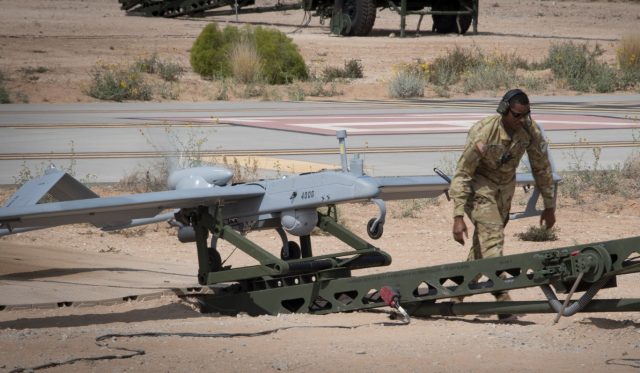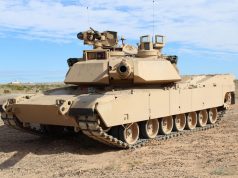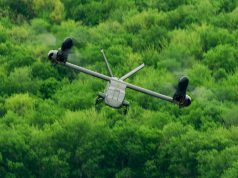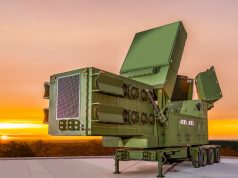Tactical unmanned aerial system (TUAS) operators from the US Army’s 1st Armored Division (1AD) are wrapping up operational testing of the new RQ–7B Shadow Block III system, a service announcement said.
Operators flew 94 missions and over 400 flight hours under realistic battlefield conditions.
According to James Adams, TUAS follow-on test (FOT) test Officer, with the Fort Hood, Texas-based Aviation Test Directorate (AVTD), US Army Operational Test Command, upgrades are designed to increase the reliability and availability of the Shadow on the battlefield.
Adams and his team worked with Shadow operators from 3rd Squadron, 6th Cavalry Regiment, 1st Armored Division and ground troops from Headquarters and Headquarters Company, 1st Battalion, 37th Armor Regiment, 1st Armored Division to exercise the capabilities of the Block III across the wide Fort Bliss desert terrain.
The Block III Shadow improves upon the Army’s version 2 (V2) systems, with a more capable payload sensor, improved engine, weatherization package, and an upgraded avionics package which includes Voice over Internet Protocol (VoIP) Communications and upgraded Levels of Interoperability (LOI) functionality.
“The test unit has stated that the Shadow Block III upgrades to the payload and communication systems, set this system ahead of the V2,” Adams said.
He explained how communications and interoperability upgrades such as VoIP, Blue force Tracker (BFT) II and LOI functionality will increase the synergistic effects of shadow operations with attack helicopters and the one system remote video terminal (OSRVT) equipped ground forces.
1AD conducted area surveillance, reconnaissance, calls for fire, target lazing and designation for the AH–64D and AH–64E Apache helicopters, as well as other reconnaissance and intelligence gathering operations.
“Assets from the 1–37 AR — such as the Bradley fighting Vehicles, mortar-equipped Armored Personnel Carriers and HMMVVs — enabled the test team to present realistic targets that simulated near peer capabilities for operators to track and report to higher headquarters,” said Adams.



























